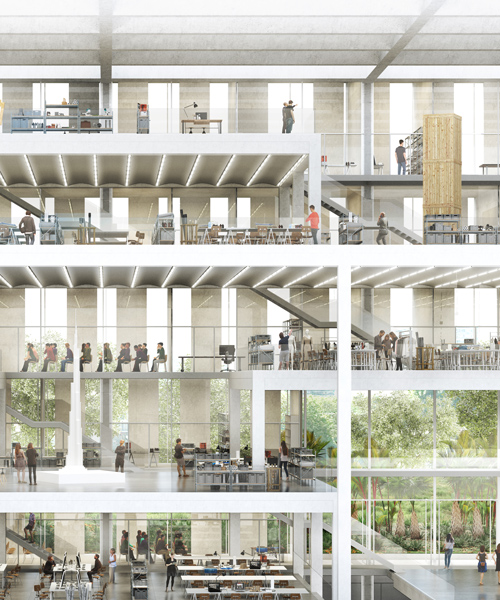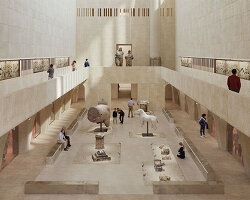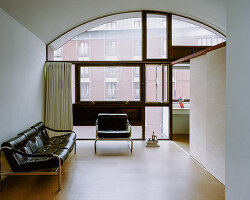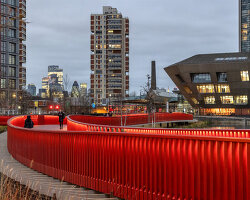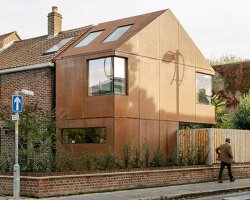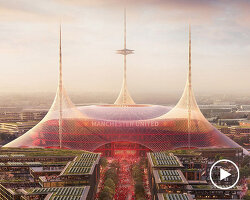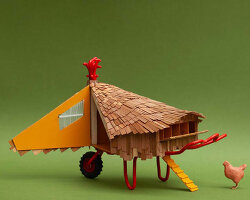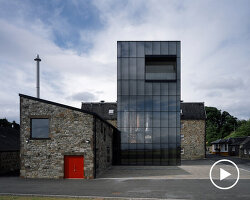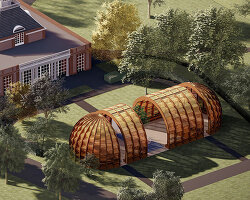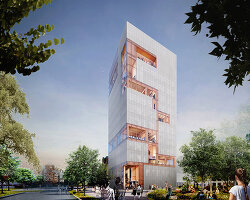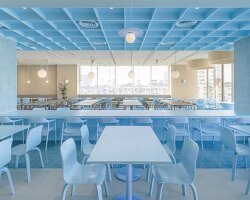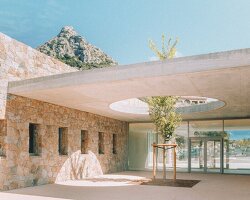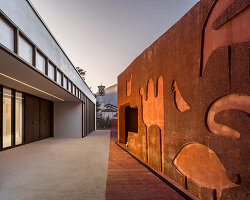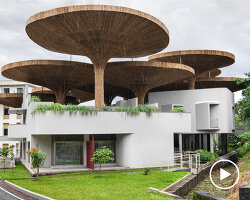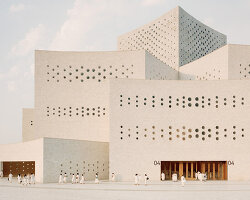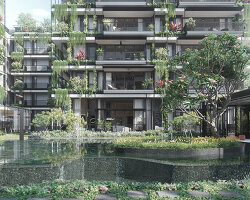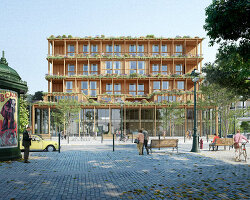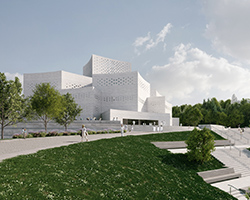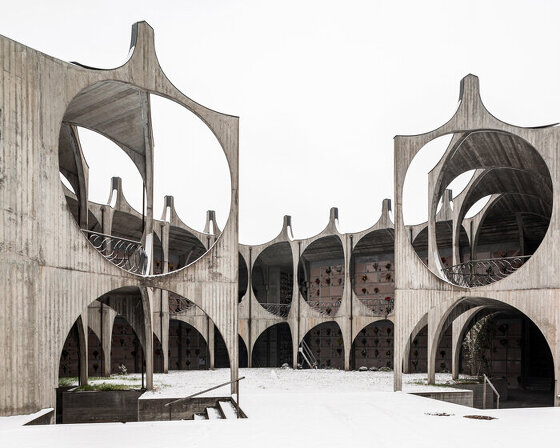serie architects has unveiled its proposed scheme for the royal college of art’s new battersea south campus, one of seven submitted as part of an invited competition. the studio was the only UK practice to be selected for the shortlist from 97 other initial expressions of interest, with swiss firm herzog & de meuron chosen to complete the project earlier this month.
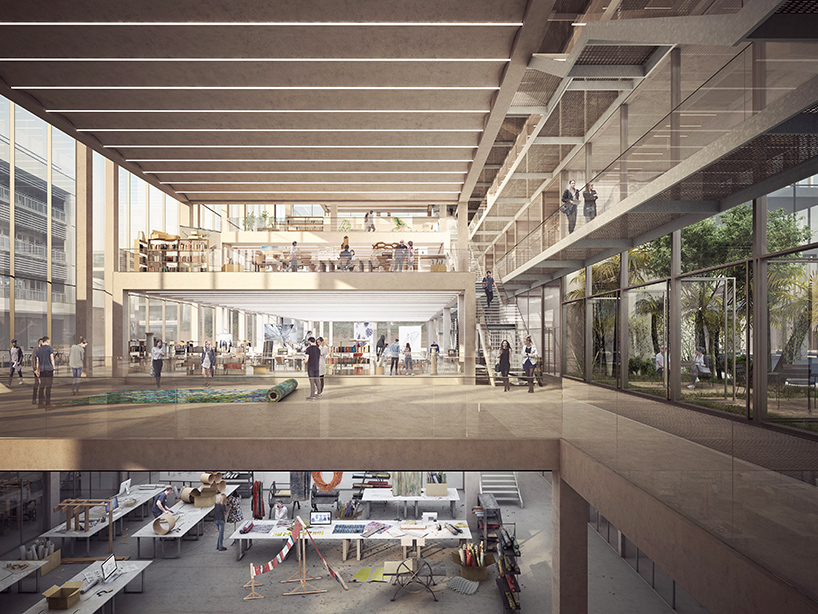
all images courtesy of serie architects
the royal college of art’s brief called for a 15,000 square meter building, capable of housing the schools of architecture, material, and fine art alongside specialist research centers and entrepreneurial incubators. workshops, film studios, and large scale prototyping labs were to be accommodated alongside individual workspaces, seminar rooms, and faculty offices.
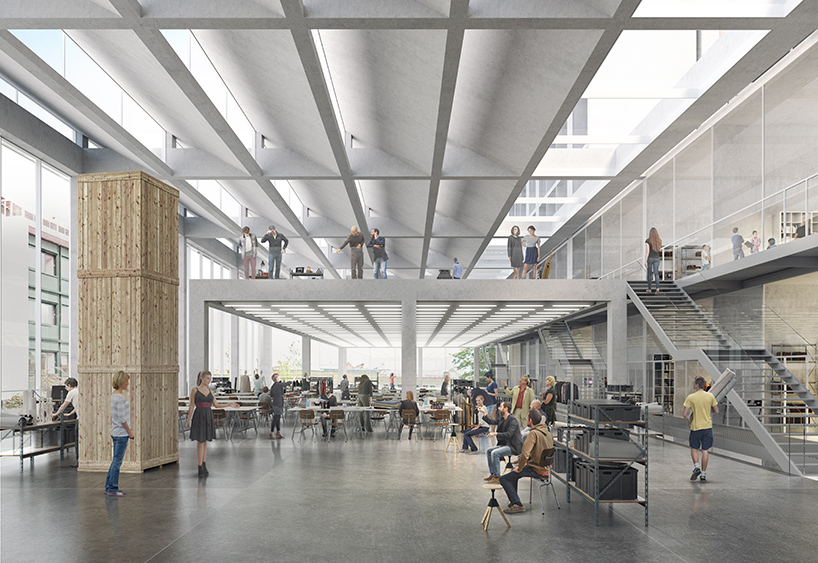
serie developed a structural system based on the principle of stacked tables
serie’s response was to develop a structural system based on the idea of stacked planes, or ‘tables’. ‘each table defines a particular space but is not enclosed within a wall,’ explain the architects. ‘tables overlap allowing visual connections between activities and the dissemination of ideas. double and triple-height spaces allow large-format production and collective discussion. the resulting composition is open and highly visible: a celebration of the creative process in action.’
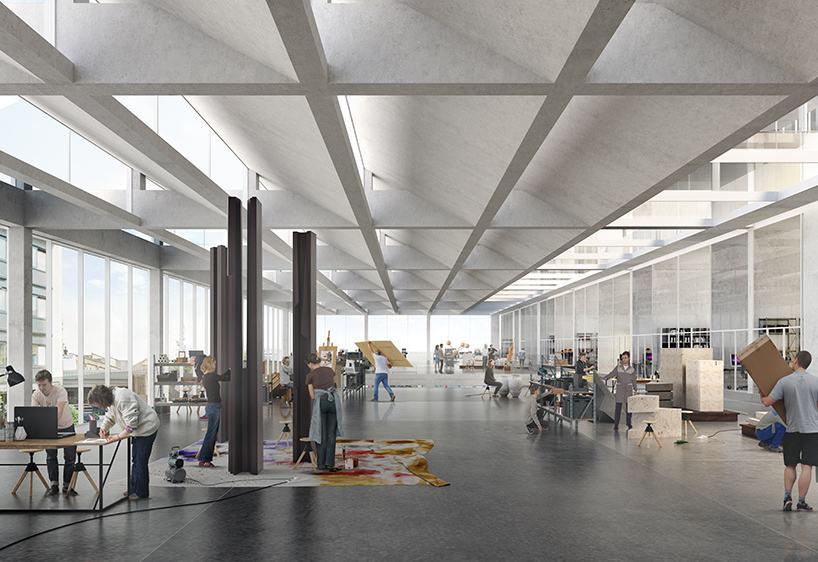
the brief called for a new 15,000 square meter building
the ‘tables’ for the school programs are placed in a five-storey structure that runs the length of the site. here, the tables containing the research programs are stacked in a ten storey tower. between the two volumes runs a narrow spine containing the campus’ shared amenities, while a system of open stairways — referred to as ‘ladders’ — connect the floors. together, these different elements create a flexible and re-configurable spatial system that can accommodate future change — the table structures can be added to or removed, while partitions can be readily adjusted.
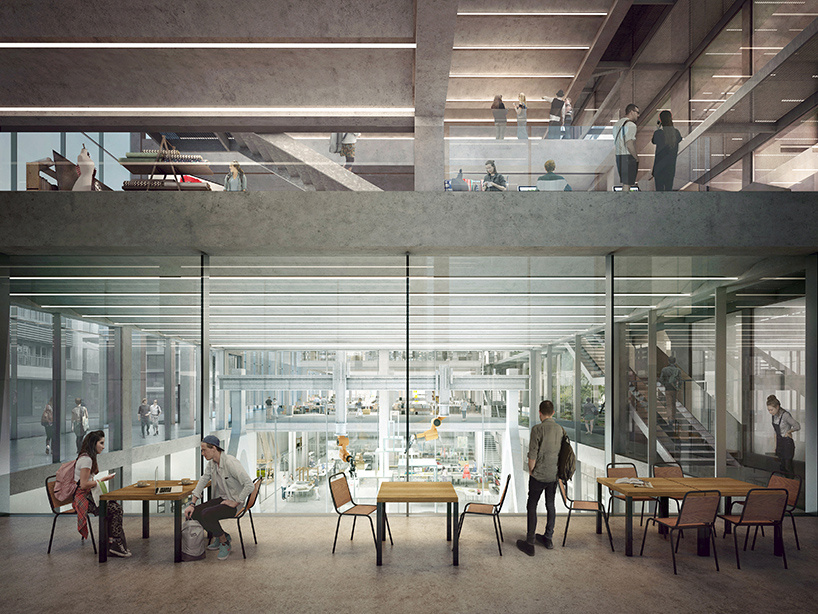
the scheme contains workshops, film studios, and large scale prototyping labs
serie’s proposal also introduces a new space along battersea bridge road that marks the entrance of the campus. the public square helps integrate the building within the neighborhood and form a center for the wider creative community. ‘howie street will be transformed into a pedestrian surface that will bind the existing dyson, woo, and buildings together with the new addition into one unified campus,’ explains serie. ‘the lobby is designed to be accessed from multiple points, from the future station at battersea park and also tapping into the existing circulation pattern.’
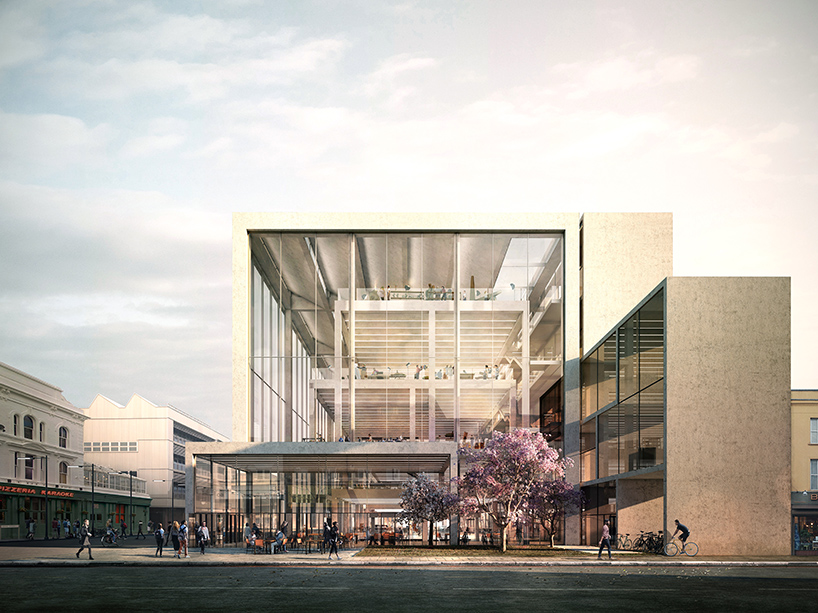
the proposal introduces a new public space along battersea bridge road
‘the composition of tables accommodates and make visible the creative life and resources of RCA,’ explains christopher lee, principal at serie architects. ‘the resulting architecture is a unique spatial model that is reduced to its very essence, a spatial model that promotes and enables collaboration and cross disciplinary learning. it encapsulates the two challenges that were given to us by the RCA. firstly, the challenge to think of an architecture whereby when a student encounters it, she will be inspired by the incredible possibilities and resources that RCA has to offer and secondly the challenge to be inventive in finding an appropriate and yet radical spatial model that will meet the demands of learning, making and researching today and the future.’

the ground floor lobby is designed to be accessed from multiple points
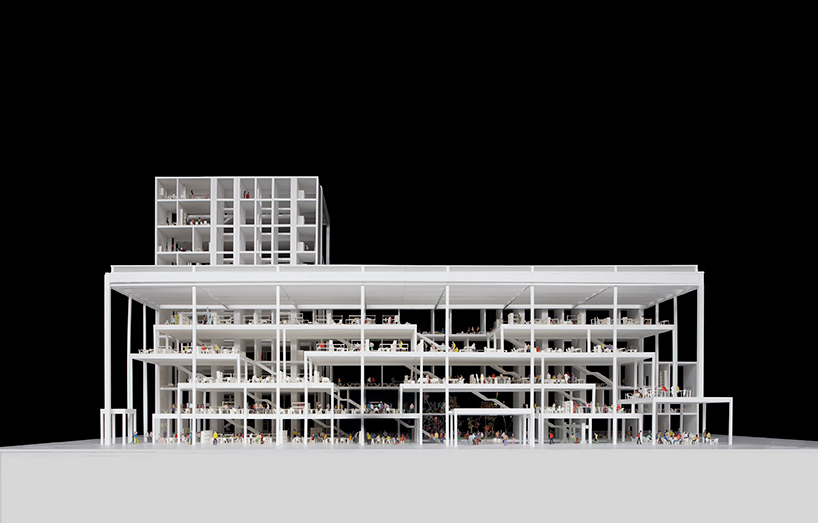
school programs are placed in a single five storey volume that runs the length of the site
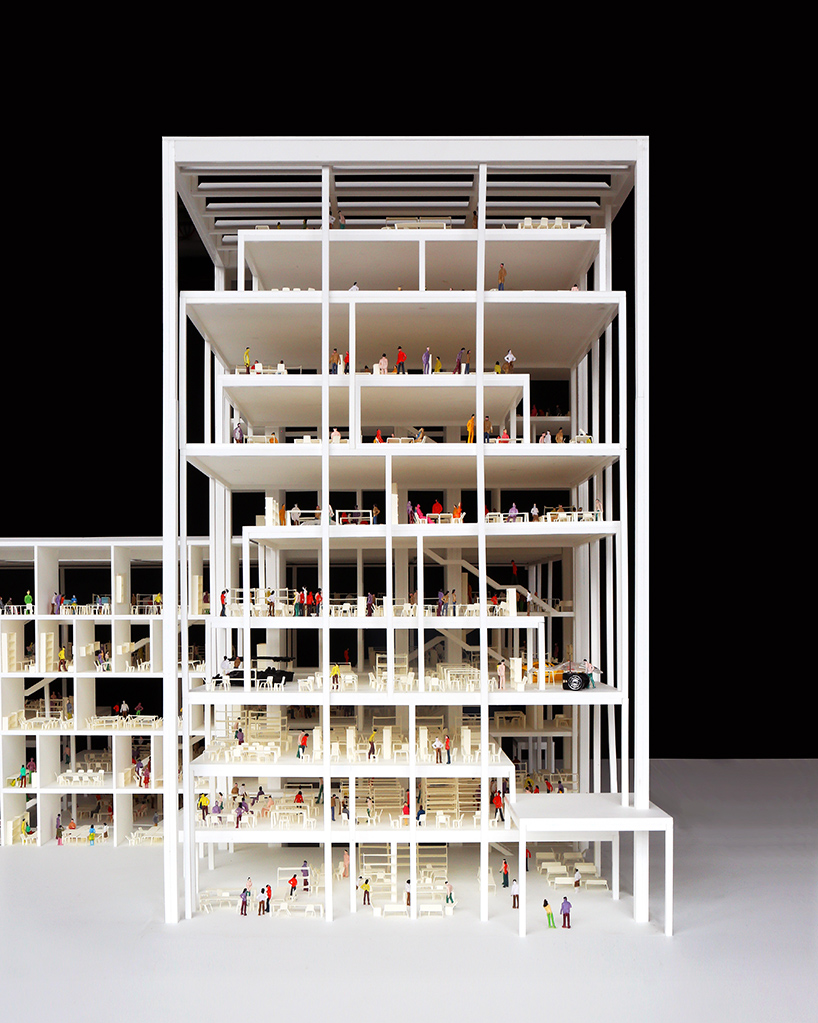
research programs are stacked in a ten storey tower
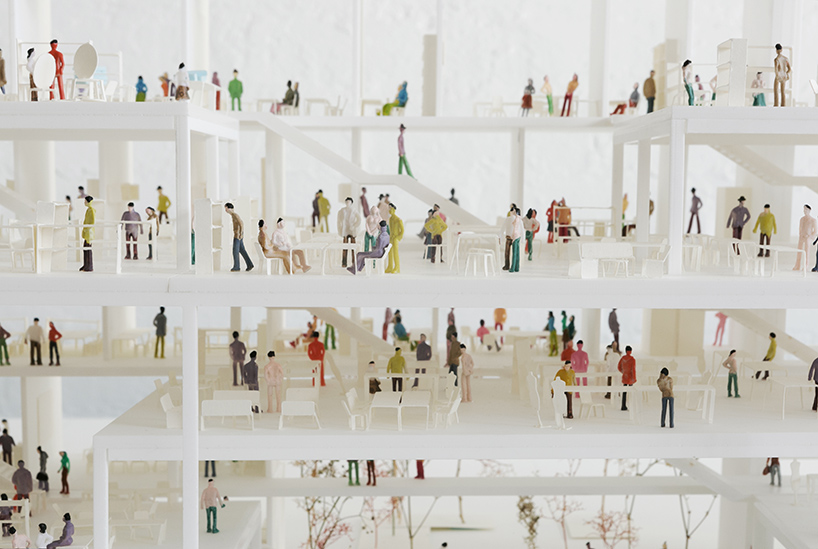
serie was the only UK practice to be selected for the shortlist from 97 other initial expression of interest
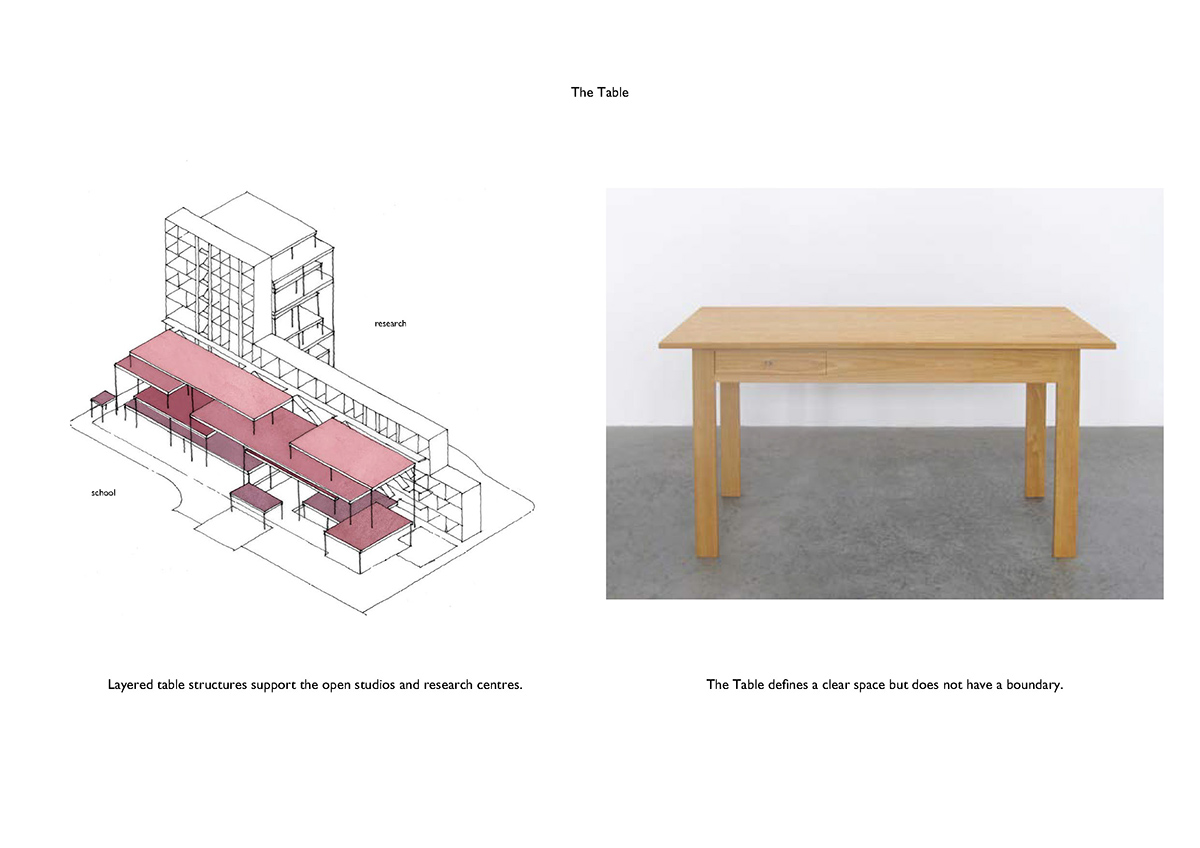
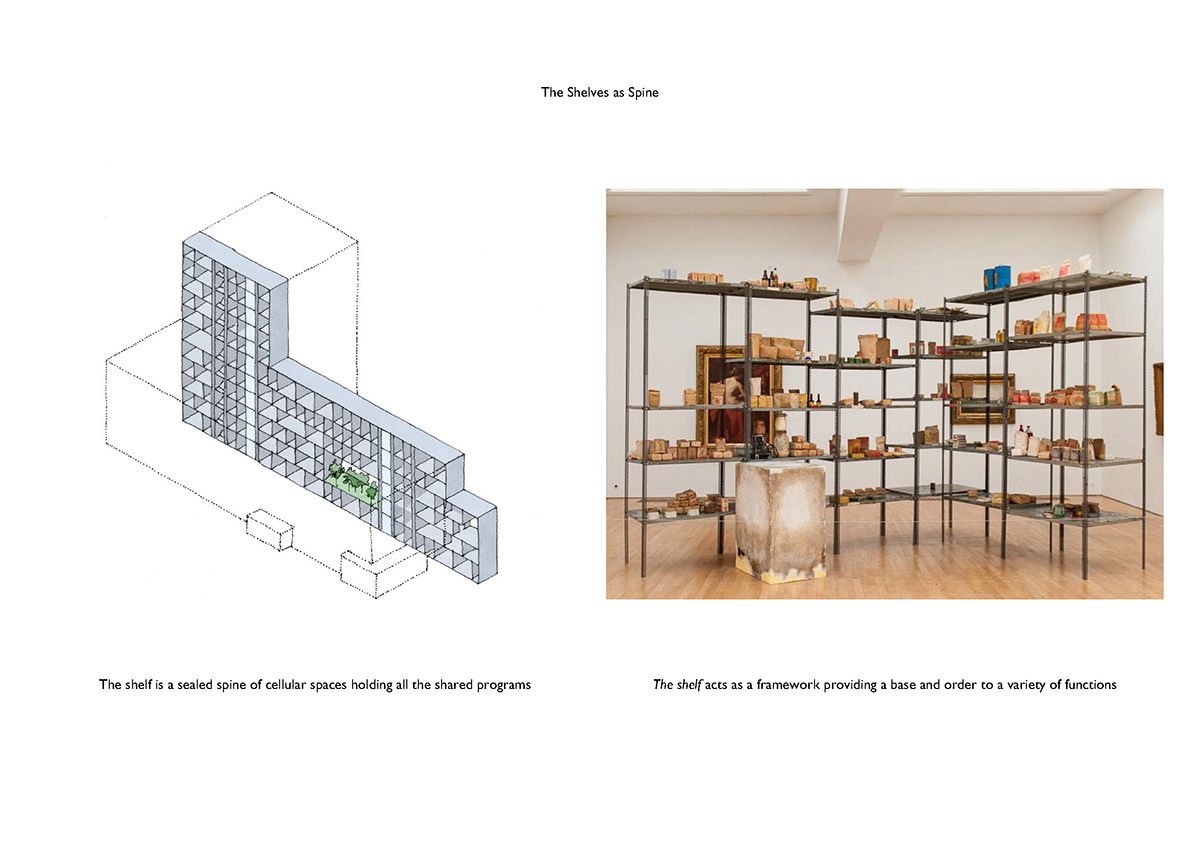
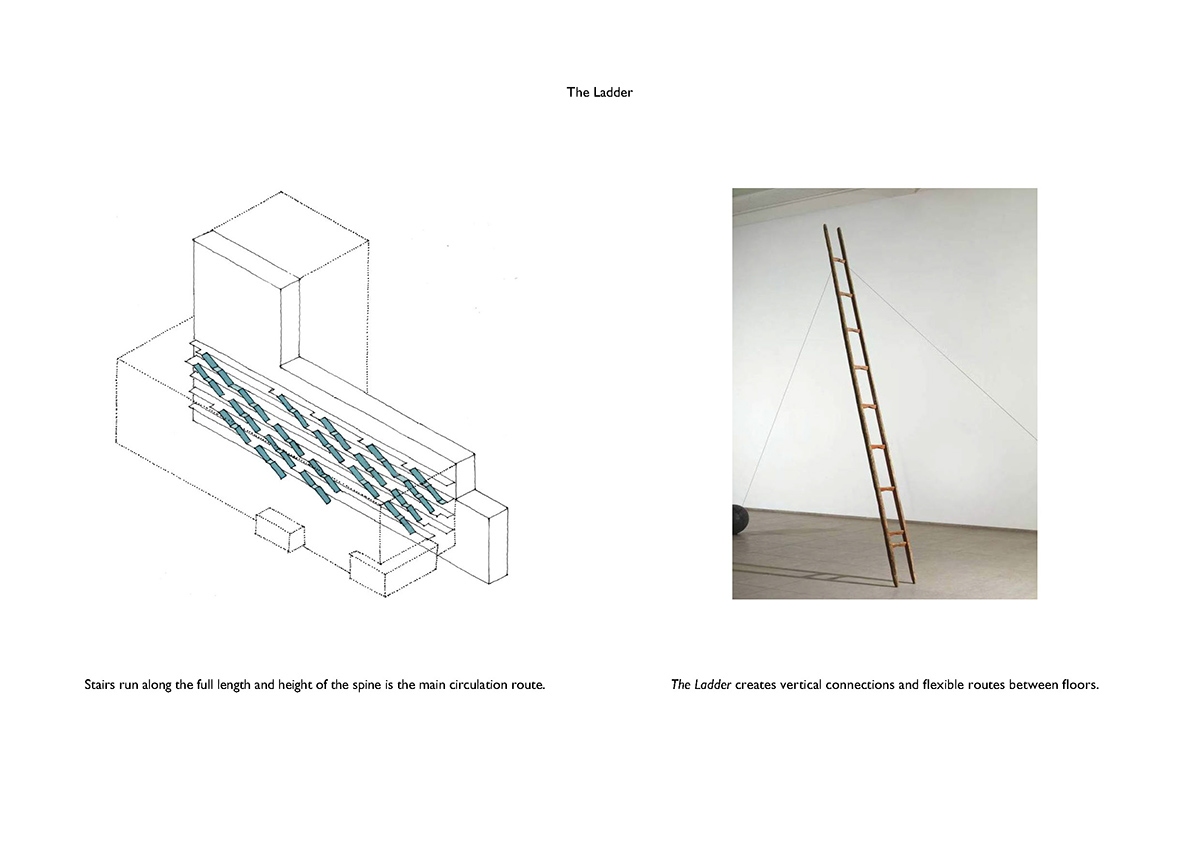

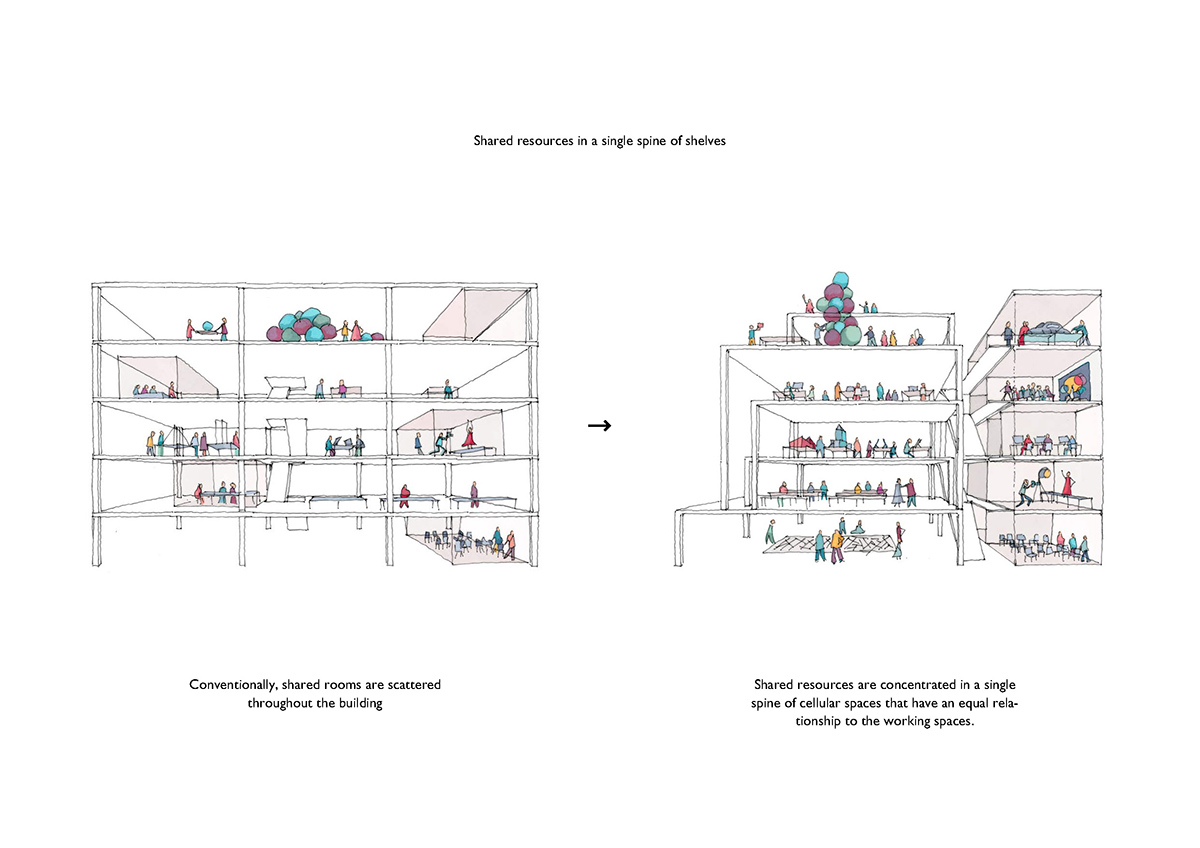
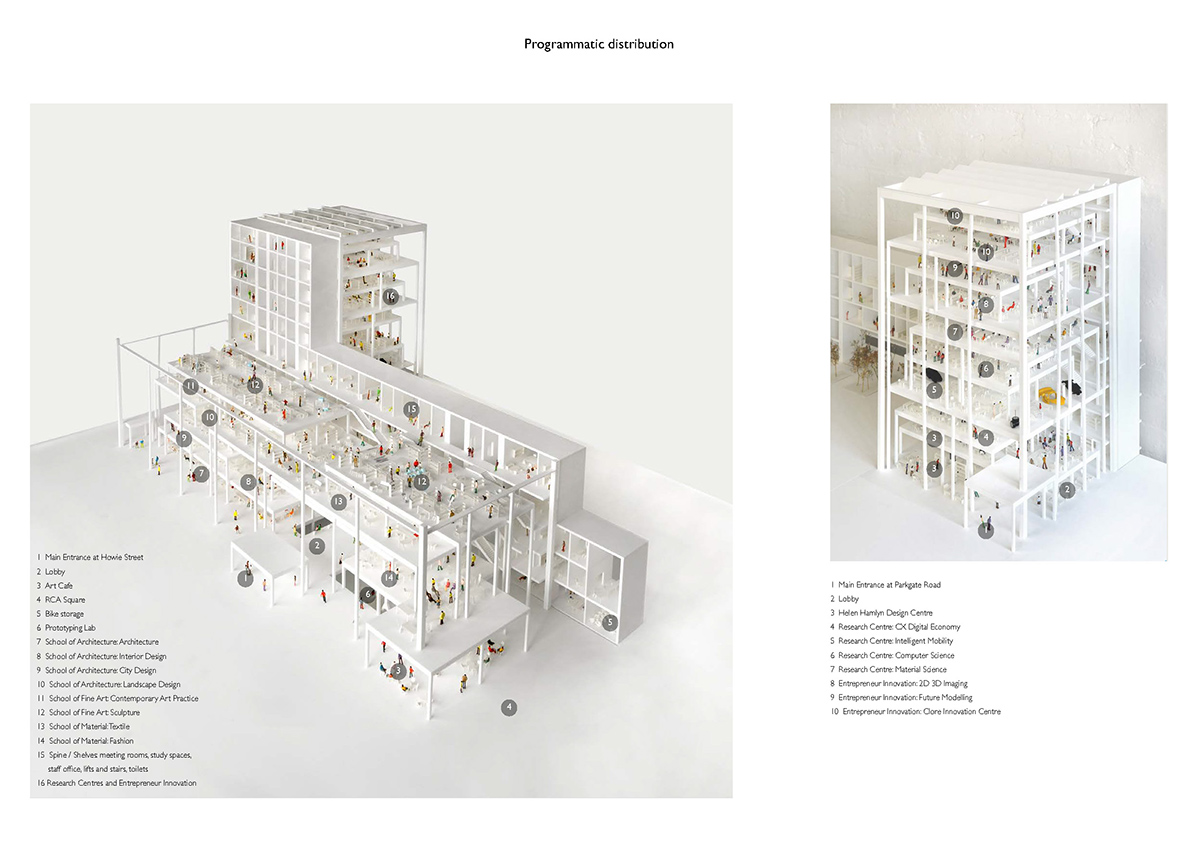
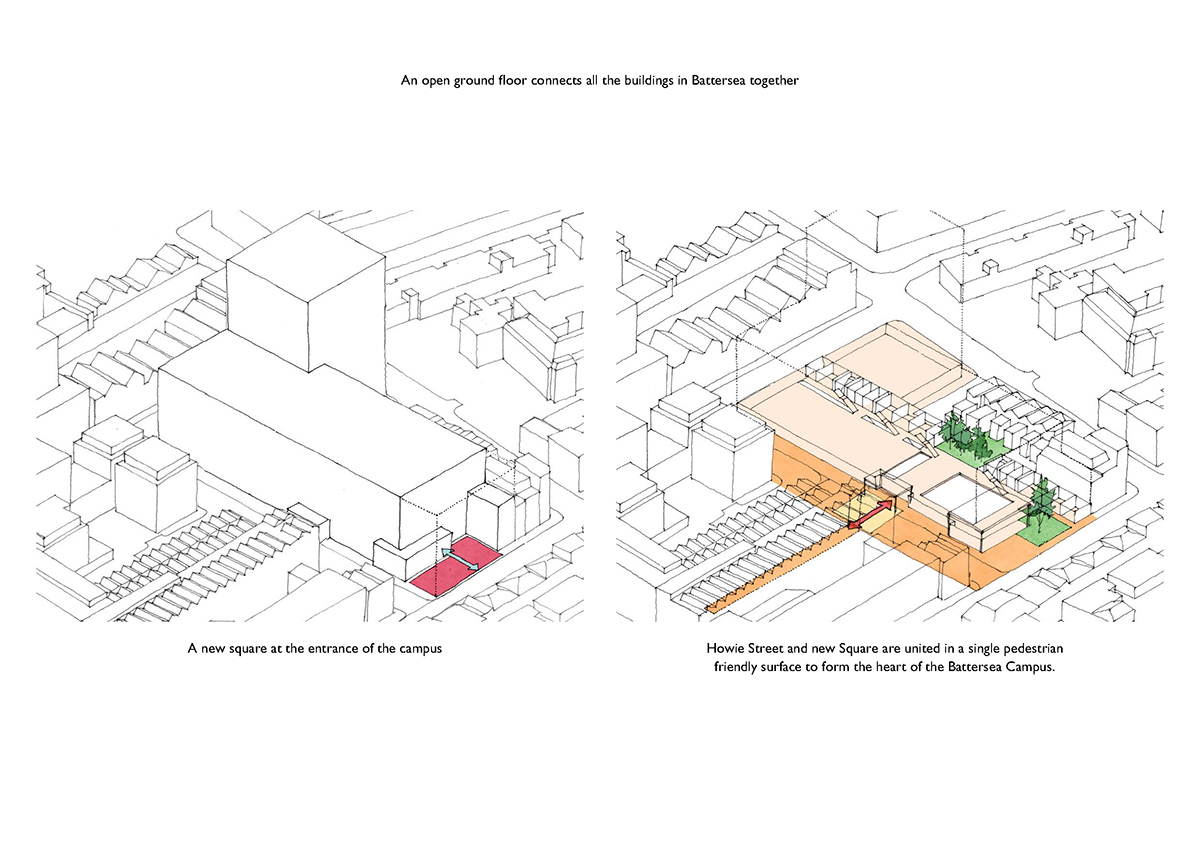
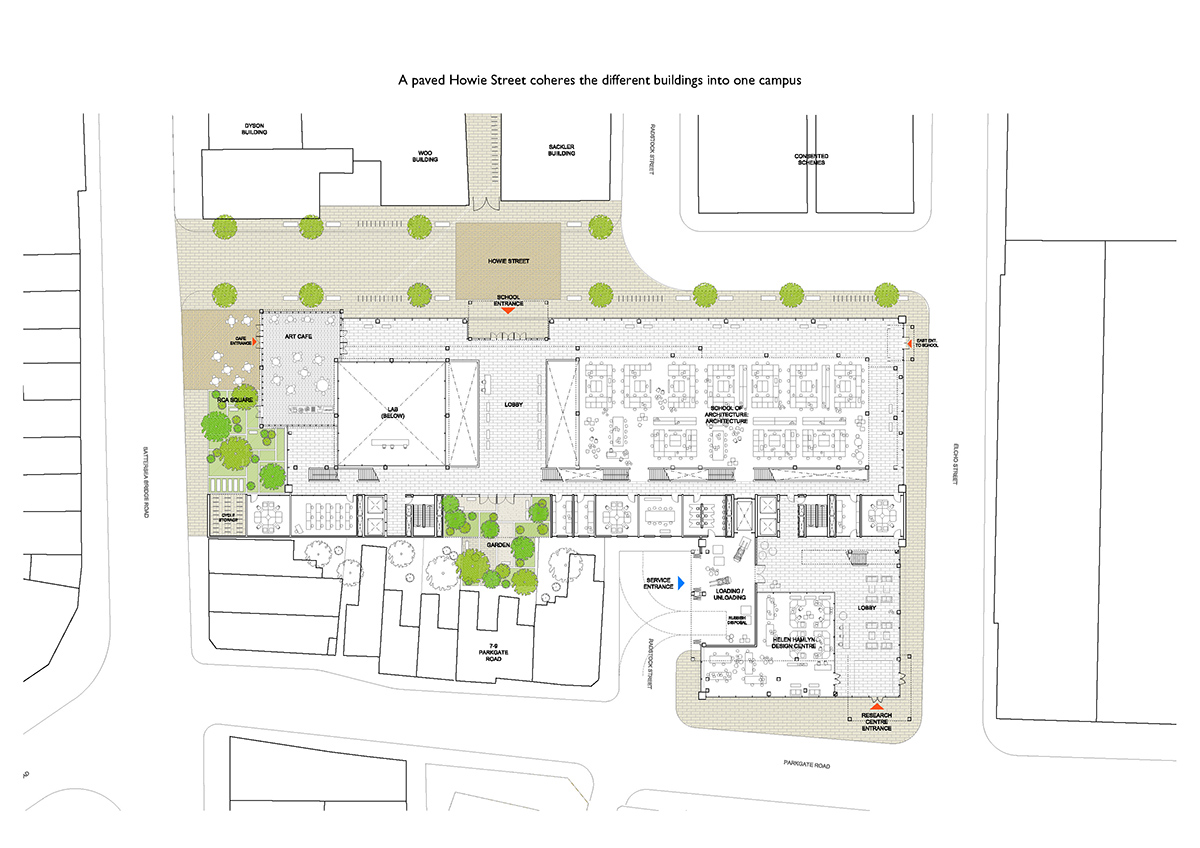
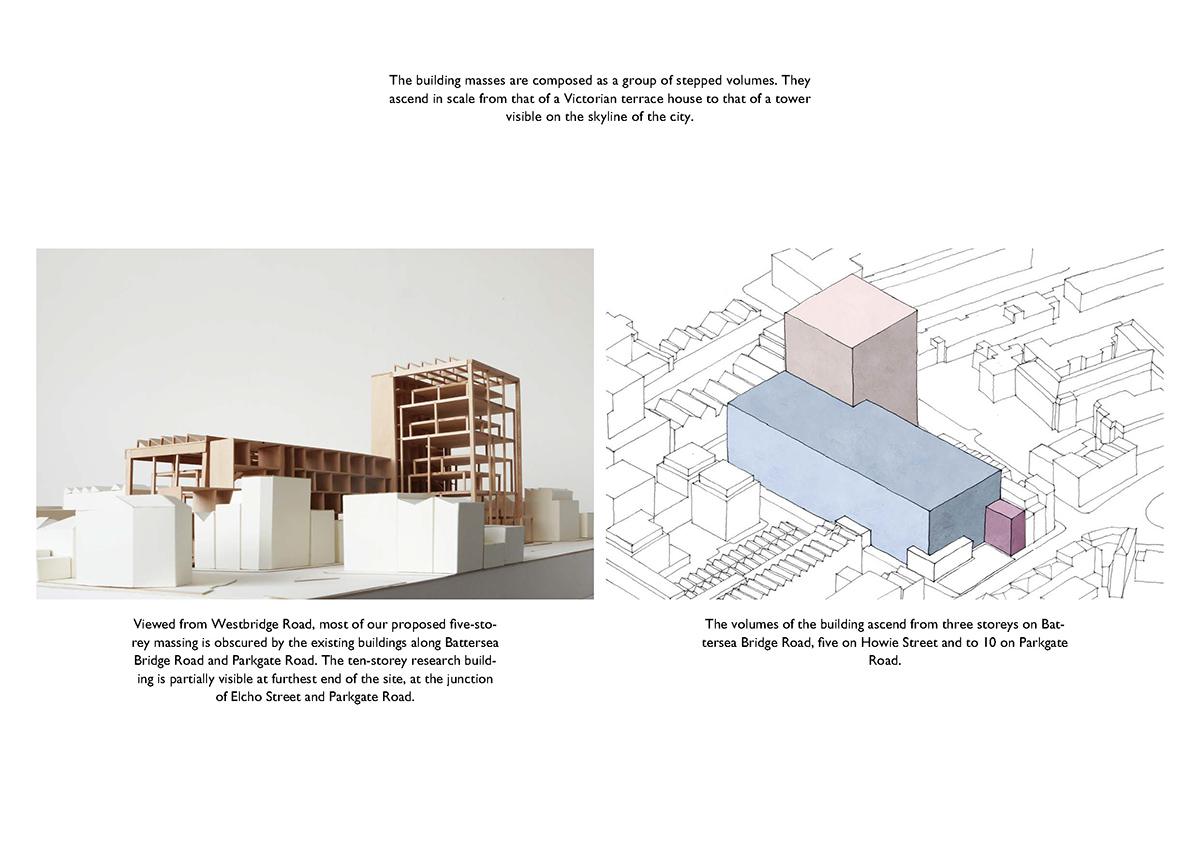
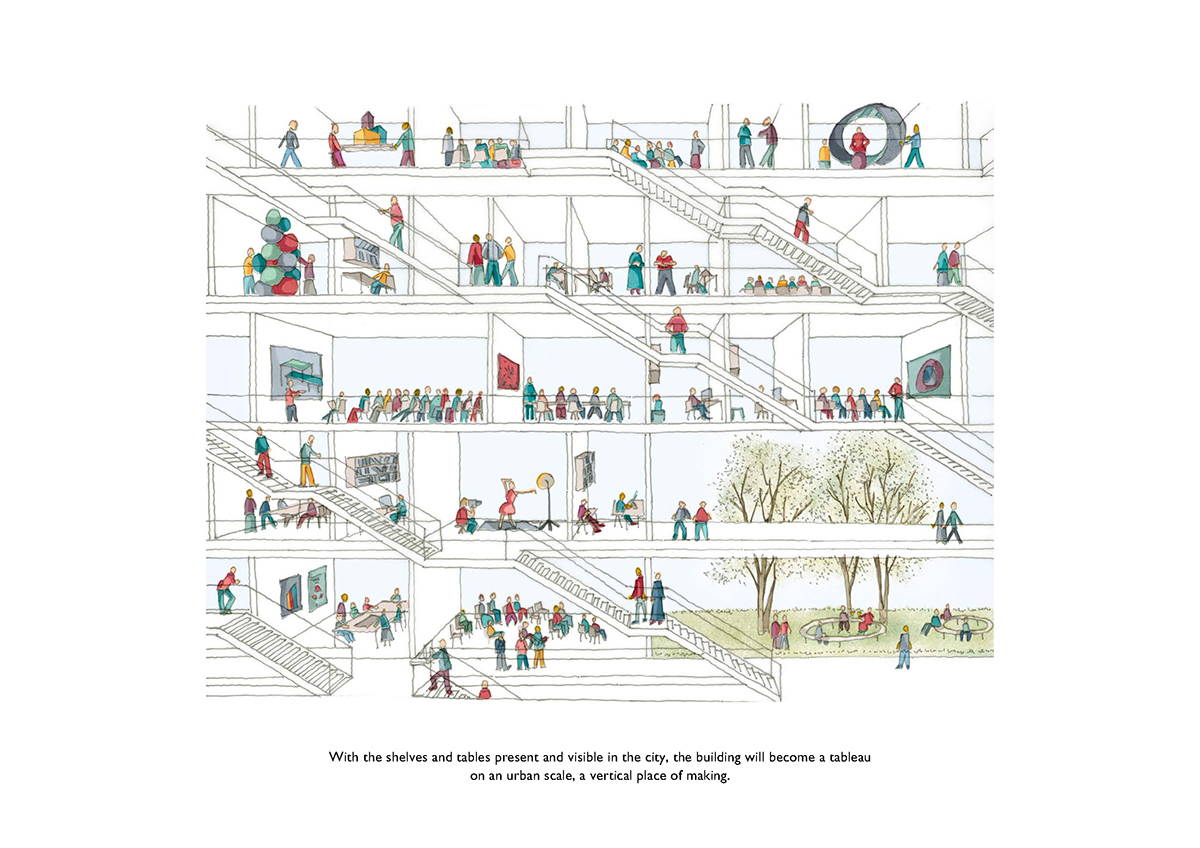
project info:
location: london, UK
use: education
status: competition, 2nd place
area: 15,000 sqm
team: serie architects, transolar klima engineering, john robertson architects, AKT II
Save
Save
Save
Save
Save
Save
Save
Save
Save
Save
Save
Save
Save
Save
